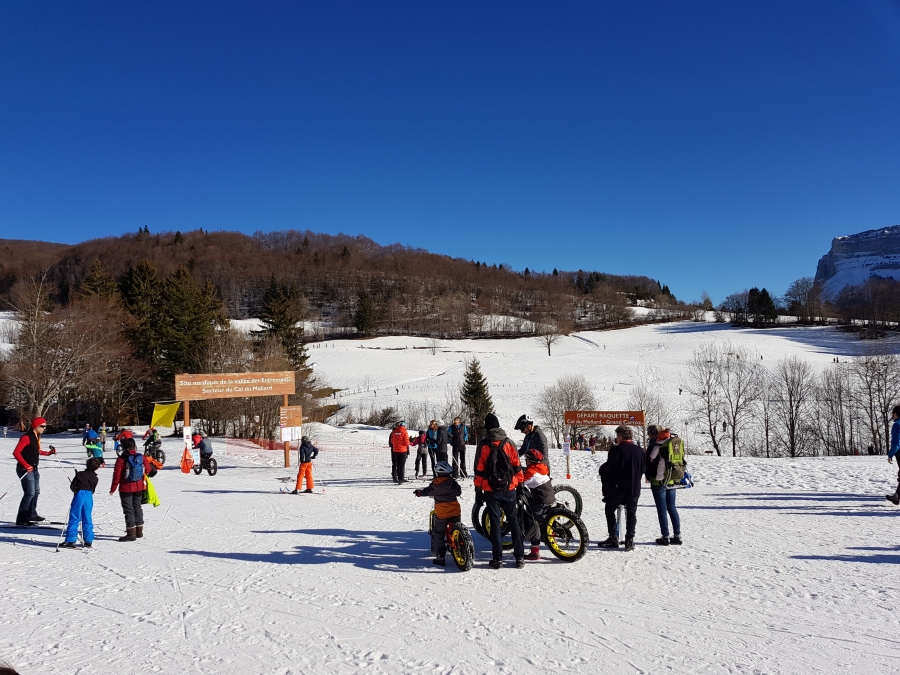With the prompt support of the Regional nature park of Chartreuse, ALPARC organised a workshop on sustainable tourism in the Alps and the role of protected areas in its development.
The 5th of December, in the beautiful framework of Le Désert d'Entremont, the managers of various protected areas gathered to exchange and discuss on the topic of tourism in Alpine protected areas, its new trends and its impact on nature.
The current situation of tourism in the Alps
The morning was dedicated to four brief presentations – one from the parc of Chartreuse and three from ALPARC – that aimed at presenting the current situation of tourism in Alpine protected areas with some insights on specific issues that parks are currently facing.
After lunch – a meal made up of typical products from the Chartreuse – the group took a walk around the Nordic ski station during which the history, the characteristics and the model of sustainable exploitation of the region were concisely explained and discussed.
Towards a new and common strategy of sustainable tourism
The afternoon was dedicated to fruitful exchanges in the form of a “world café” on three topics:
- Development of nature sport and the role of protected areas
- Diversification of touristic offers and quality certifications in the Alpine arc
- Governance, identification and communication
The participants not only brought to the table their knowledge from the parks they work for, but they furthermore elaborated on new ideas in order to face problems that persist in the whole Alpine region and especially for its protected areas.
This collection of ideas and practical suggestions has been synthesised and will serve to set the basis for new projects on tourism and protected areas at the macroregional level including, if possible, an Interreg Alpine Space project.
This action was financed by the CGET (France)


